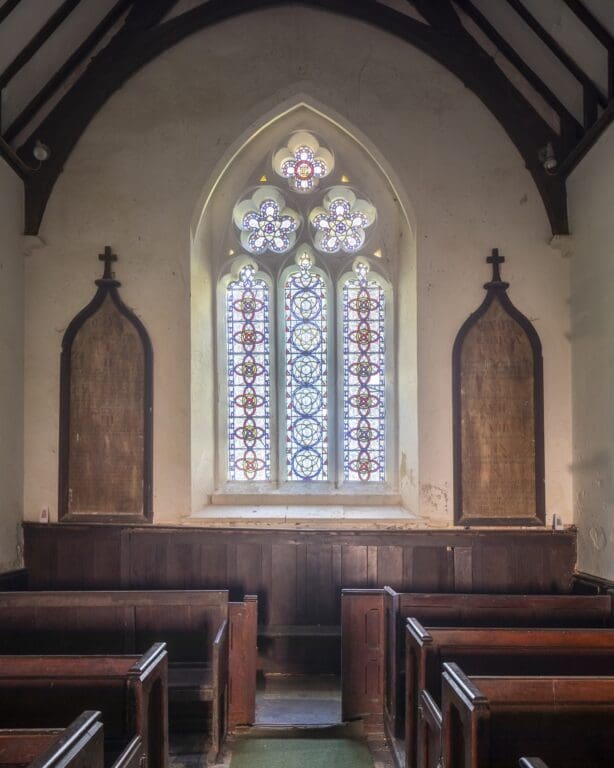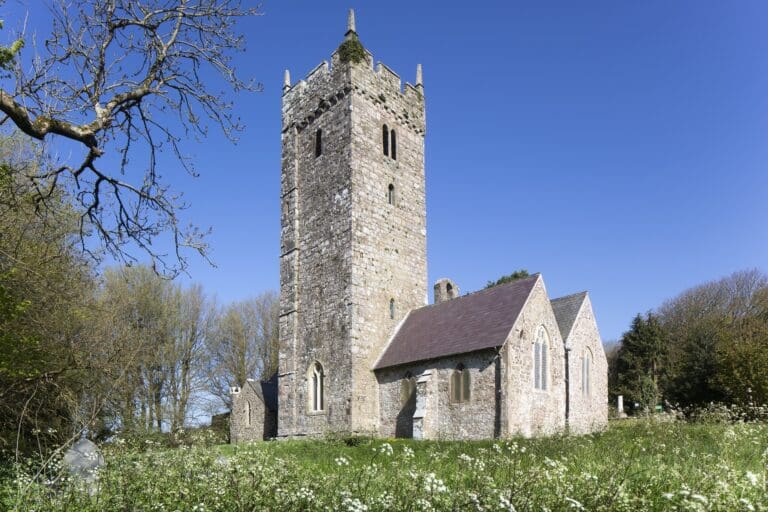
This medieval church is robust. It survived the explosion, and continues to be extremely well-cared for by people in surrounding villages.
This Grade I listed, largely medieval, church with an especially tall Pembrokeshire tower, has an unusual dedication. Decumanus (or Decuman, meaning the 10th man) was born in Rhoscrowther. Wishing to lead a life of solitude, he crossed the Severn in a coracle and landed near Dunster. He settled near Watchet in Somerset, where he lived the life of a hermit until his martyrdom in AD 706 ‘at the hands of a truculent fellow who cut off his head with a spade’. His head was eventually returned to his birthplace in Rhoscrowther.
St Decumanus’s church has a complicated plan, which has four chapels or oratories, each built by the occupants of the four significant houses in the parish, including the remarkable, surviving tower house at Eastington.
The interior retains a small rather animated late medieval figure of The Risen Christ high above the inner door to the south porch, several tomb recesses, one with a 14th-century female effigy, and a number of objects moved from St Mary’s, Pwllcrochan when that was converted to a house in 1994. The best of these is the very fine Rococo monument to F. Powell of 1716 but the second of the church’s two 12/13th century fonts also come from the same source. The finely carved step into the north transept seems to be the remains of a 15th-century altar tomb, perhaps dismantled during the Reformation.
St Decumanus’s has had several phases of restoration: one in 1852, another in 1869-70 by F Wehnert of Milford, and the last by W D Caröe in 1910.
In 2022-23 we carried out repairs to the windows, roof and masonry thanks to a grant from Cadw.




The buttons below link to church or local information on other websites.